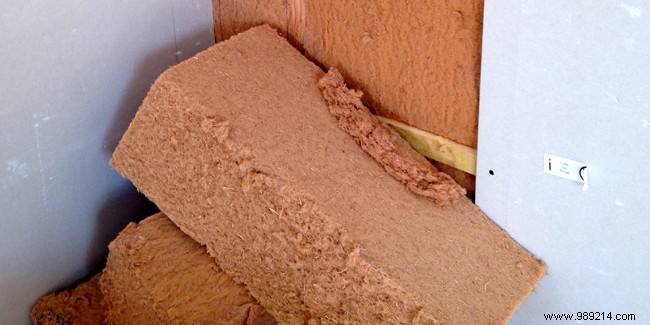
Insulation is essential to increase thermal and acoustic comfort of an old house. This reduces its energy expenditure but also the impact on the environment. Depending on the case, it is possible to opt for interior insulation or exterior insulation. How to choose between one or the other? Each of these solutions responds to very specific problems and has its own strengths. We can indeed take advantage of the insulation to improve certain defects while preserving the aesthetic or architectural assets of the building. Let's take stock.
The interior insulation of an old house is the solution that is essential when the owner wishes to preserve the undeniable beauty of a stone wall. Contrary to popular belief, it is essential to insulate an old building which has thick walls. This type of old house suffers the brunt of temperature differences, and much more than you think. The stone alone is not enough to perfectly insulate the interior, whether against extreme heat or extreme cold.
In old, uninsulated houses there is significant heat loss and condensation problems causing mold that can cause allergies in the occupants of this type of housing. The challenge is therefore ecological, economic and health. In this type of housing, families experiencing a lack of comfort in summer and winter generally end up overheating or using air conditioning night and day. This is far from ideal, both in terms of budget and environment. Owning an old house does not exempt you from using an insulation solution since a stone wall constitutes a thermal bridge .
However, there is no question of hiding everything that makes the building so charming behind insulation, as this would also risk losing part of its value. In this case, we therefore opt for internal insulation which has the benefits following:
For the ITI or Thermal Insulation by the Interior of your old house you can choose:
To improve this insulation, it is possible to replace your old windows through double-glazed windows. Once completely renovated in terms of insulation, a house from another age can display performances very close to those found in a Low Consumption Building (BBC) much more contemporary.
There are different exterior insulation techniques which are ideal for old buildings. That's interesting:
To do this, professionals recommend an alternative solution which consists of covering the exterior walls and the roof with a kind of insulating coat. This allows at the same time to swallow the facade. However, it should be noted that the exterior insulation modifies the initial appearance of the building since the very structure of the construction is more or less retouched. You can for example:
The cost of exterior insulation carried out on an old house – installation and materials included – is generally between 100 to 130 €/M² including tax. It can only be obtained precisely on quotation after the project has been clearly described by the client to the craftsman.
The interior or exterior insulation of an old house can significantly reduce heating (or air conditioning) costs and consequently improve the comfort of the whole family fivefold. But whatever insulation solution you choose, you have to start by treating the capillary rise . A problem that an experienced professional detects at first glance.
Also, when you plan to insulate your old house, it is necessary to entrust your project to a renovation specialist like Acorus in order to obtain a tailor-made estimate and all the wise advice that allows you to choose the solution best suited to your old building. This approach is also necessary when you want to calculate the cost of insulation of an old building that we are about to buy. This upstream estimate allows you to know if the planned real estate investment is really worth it.
Note that owners may be granted aid for energy saving work as soon as they call on a RGE professional (Recognized Guarantor of the Environment). Among the possible boosts, we find the CITE (Tax Credit for Energy Transition) and the zero-rate loan which can be combined, as well as the reduced-rate VAT. Between the aid granted and the savings achieved in the medium term on energy consumption, insulating an old house is a profitable operation . Finally, you should know that if it is perfectly insulated, an old house sells much better and faster than an old building that is poorly insulated. If, in addition, the owner has taken care to preserve the original style, his property may be among the most sought after by investors.